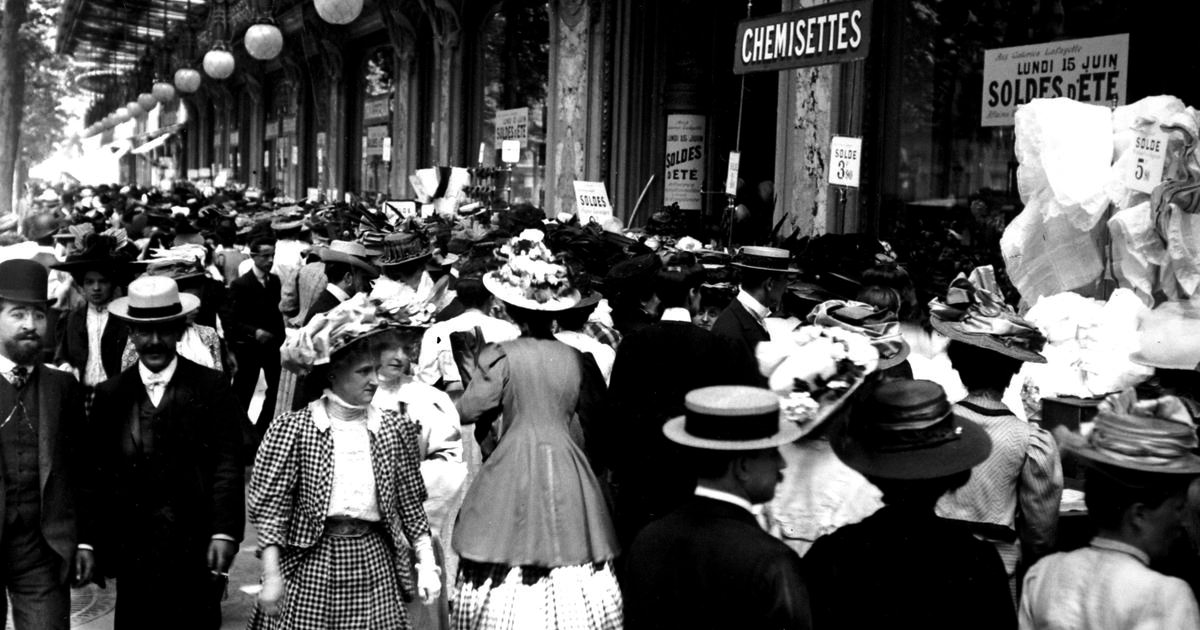Social News
Written by: Chen Jiahui
2020-09-17 07:00
Last update date: 2020-09-17 07:00
The new type of pneumonia epidemic continues to affect Hong Kong, hitting all walks of life. The government launched the third round of epidemic prevention and anti-epidemic funds, involving a total of 24 billion yuan. It is mainly used to purchase vaccines, support the Hospital Authority to respond to the next wave of epidemics, etc., and spend 4.5 billion yuan Yuan supports more than 20 industries that have been hit hard by the epidemic, but does not include the extensive retail industry that has received 30 billion yuan in funding earlier.
The citizens have been fighting the epidemic for a long time, and the gathering restrictions have been relaxed recently, and the market has slightly seen "retaliatory consumption".
An AI storefront analysis company found that under the epidemic, the market conditions in Hong Kong were the worst in April-May, with the flow of people falling by 80%, and rebounding in June. The flow of people fell during the third wave of the epidemic in July, but it was not too bad.
Retail stores and restaurants bear the brunt of measures such as gathering restrictions and bans on dinning. However, clothing stores have closed the most stores.
However, in the environment of low penetration, there are also mid-to-high positioning chain brands that are expanding against the market, renting out new shops by "buying while they are low"; and under the epidemic, it is not necessary for citizens not to go out. Entering shops is more purposeful, and shops are promoted online. Open up the source of customers.
Tu Houjun, co-founder and chief executive officer of Dayta AI, an artificial intelligence enterprise solution company, observes that Hong Kong merchants generally adopt a strategy of "stabilizing, stabilizing, and decreasing" when opening stores. On the contrary, under the epidemic, whether it is expansion or contraction, they will be more aggressive.
He noticed that some mid-to-high-positioned chain clothing brands have recently expanded against the market. It is estimated that the current rents are low, and leases are generally signed for three to four years. Even if the business is poor in the next one or two years, the rent signed this year will be between two. It will be a special price after the year.
▼Reopening of premises and relaxation measures starting on September 18▼
Related news: Google Big Data reveals that the third wave of the epidemic has only one type of place where the flow of people has increased, and retail market conditions have increased. Merchants are seeking changes to use AI to analyze storefronts to increase flow and reduce expenses
Under the epidemic, citizens have clear goals for going out on the street to promote online attracting customers
The epidemic is undoubtedly changing people's shopping habits. Tu Houjun found that in the past, Hong Kong people liked to walk on the streets. There were a lot of people on the streets, but they did not necessarily consume them. Under the epidemic, there is no need for citizens not to go to the streets. If they go out, they usually have clear goals.
He analyzed the data of about 400 local shops using the analysis platform of Dayta AI and found that the shop visit rate (number of people entering/number of people passing through the shop) during the epidemic has increased, from the usual 25% to as high as 35%.
Tu Houjun pointed out that many merchants have changed their strategies, focusing on online promotion, issuing online coupons to attract customers to shop for consumption, and using traffic data to analyze the results in real time and respond quickly.
Tu Houjun pointed out that under the epidemic, many chain brands hope to have more immediate and specific data to determine which branches are worth investing in or increasing staff, and which ones need to be abandoned.
(Photo by Chen Jiahui)
No one will deny that the market conditions are bad today, but how bad is it and how bad is it?
Tu Houjun gave an example. Under the epidemic, many chain brands hope to have more immediate and specific data to determine which branches are worth investing in or increasing staff, and which ones need to be abandoned.
"Everyone knows that the number has fallen, but how much and how does it fall? If there is no information, it is very difficult to fall." He said that his company's business was also driven by this. In June-July, it added 100 stores to use services, especially many. In order to sell the retail brand customers, a total of 400 shops were used by the end of August.
Data depicting market conditions under the epidemic: April to May are the worst, Causeway Bay in Mong Kok is the worst
As for when is the worst?
Tu Houjun recalled that in the early January-March period of the epidemic, the impact on the market was relatively minor. In April and May, the impact was the heaviest, and the flow of people on the street decreased by 80%.
What does this mean for merchants?
Taking department store store data as an example, the number of people entering the store on weekdays is about 12,000 to 13,000, which suddenly fell to 2,000-3,000; in June, the number rebounded, and the number of people entering the store rose to 15,000 to 16,000. Tu described this as The citizens' "retaliatory consumption" for a long time fighting the epidemic.
In mid-July, there was a third wave of epidemics in Hong Kong. More than 100 cases were diagnosed in a single day for several consecutive days. The flow of people fell, but it was not as bad as in April or May, and thereafter it also slowly picked up.
Specific to different regions, he observed that the areas where restaurants are concentrated in Mong Kok and Causeway Bay are the most bleak, and the flow of people can fall by 90% at the worst. Even shopping malls with many restaurants are affected; industrial and commercial districts may be affected by "working from home". The average drop was about half; while the residential area fell by 20% to 30%, which has little impact.
Comparing different types of stores, restaurants and experience-oriented stores have the largest reduction in traffic, but clothing stores have closed more seriously.
While the "no dinning order" has been maintained for a long time, the business of snacks and fresh food shops bucked the market and rose.
Tu Houjun found that the number of visits to individual food stores has even tripled, and the number of different types of customers has increased. "Usually, it is mainly women aged 30-40. Now there are more offspring and middle-aged men."
The epidemic has spawned new products: immediate notification to avoid violating the gathering restriction order
The retail industry in Hong Kong was also affected by social events last year. Compared with the period of frequent demonstrations and the epidemic this year, Tu Houjun pointed out that the impact last year was more concentrated. For example, during weekends, Hong Kong Island, Mong Kok, and Tsim Sha Tsui were affected. To describe it, because a large number of people will drive the flow of storefronts to a certain extent, the degree of impact will depend on the type of store and whether the store owner decided to close the business at that time.
Dayta AI uses artificial intelligence and video analysis technology to provide storefront data analysis platforms and services.
Retailers install general closed-circuit televisions in their stores, and then connect to the platform to obtain analysis of the flow of people, staying conditions, gender, age, and interaction of customers.
Tu Houjun said that the epidemic has also spawned new product demand. For example, some customers request more real-time traffic data analysis and notifications to avoid violation of the gathering restriction order and more flexible arrangements for the number of people. Related services will be launched in September.
01Data new crown pneumonia new crown pneumonia retail market artificial intelligence








